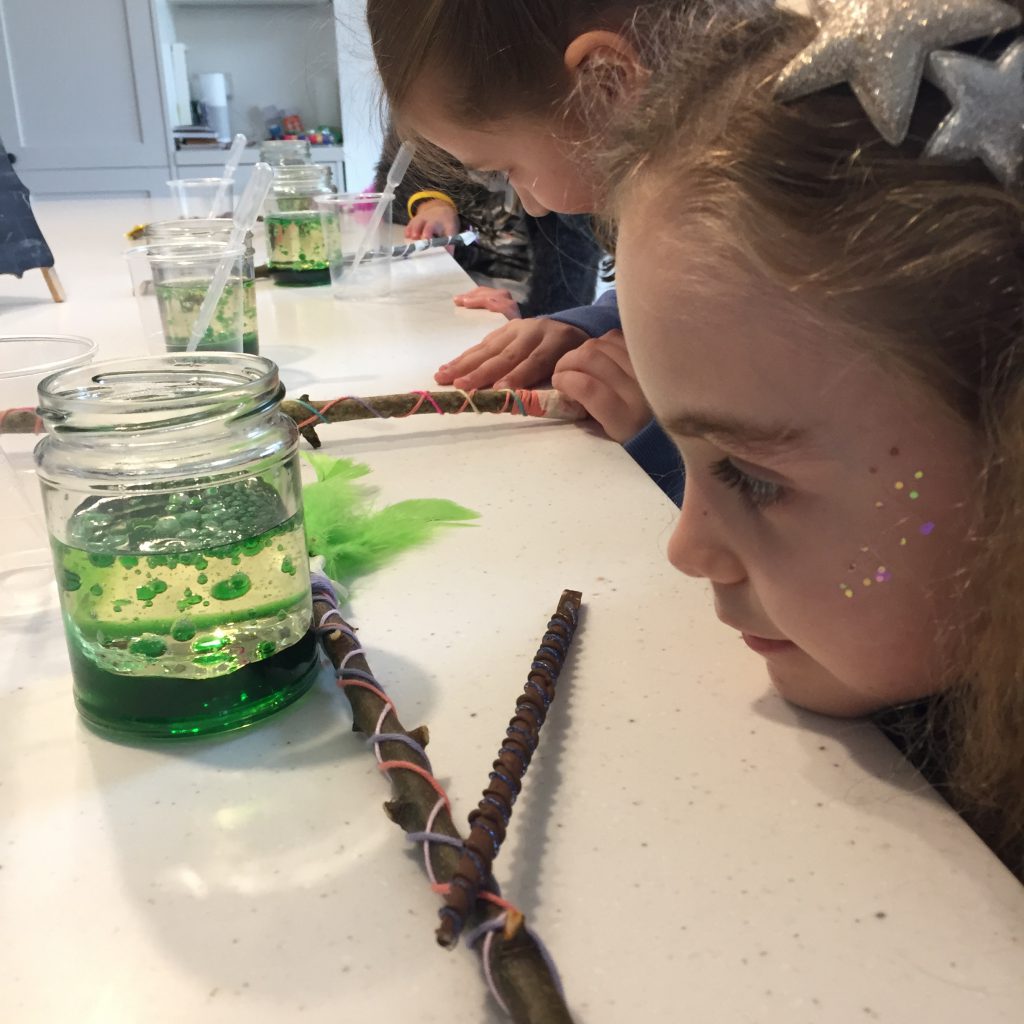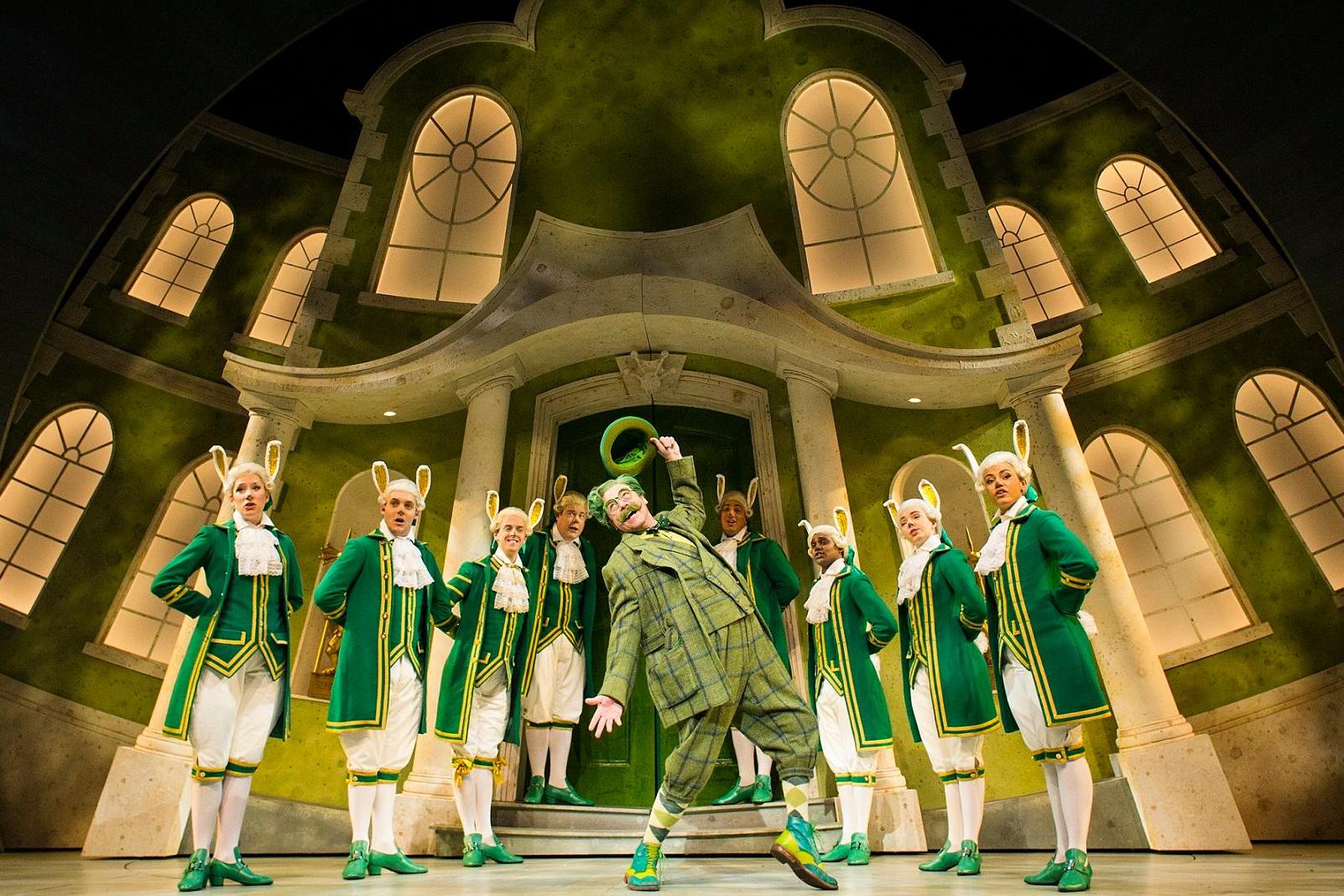Harry Potter Potions Lesson
For a recent Harry Potter birthday party, we wanted to take the narrative of the story and inject some fun STEM elements into the activities, so we set up our own potions lesson for the party guests to make their own Harry Potter inspired potions. The guests were quite young so we made sure the experiments were fairly simple and that everyone could have a go making their own potions.
All the ingredients we used are simple to source from your local shops and all safe for children to handle. It’s all quick and easy to set up as well.
Our audience were really absorbed in the experiments, loved predicting the outcomes and wanted to do them all a second time.

Giggling potion
Materials/Ingredients
- Medium size jars (one for each person)
- Vegetable or sunflower oil
- Food colouring, (a darker colour is best)
- Alka Seltzer fizzy tablets
- To prepare, fill a jug with water and add a generous amount of the food colouring until you get a nice bright liquid
- Then fill everyone’s jar to about a third of the way up with the oil.
- Next add another third of coloured water, you don’t need to mix the two liquids.
- Finally we all took our magic wands and said a little spell, while dropping the alka seltzer tablet into the jar.
- Watch how the fizzing tablet pushes the coloured liquid up through the oil creating a lava lamp effect, we described this as the potion making the giggles burst out of the liquid.
Scientific bit…
Oil and water don’t mix, you will notice they stay in separate layers when you first add them to your jar. When you add the alka seltzer tablet it dissolves in the water releasing carbon dioxide bubbles which push up through the oil as they rise to the surface creating the cool coloured bubbling effect.
Love potion
Materials/Ingredients
- Red cabbage
- Clear cups
- Pipettes
- Spoons
- Bicarbonate of soda
- White vinegar
- You need to prep this one in advance by making the cabbage water for your base. To do this, roughly chop up the whole cabbage, put in a large pan and cover with water, boil for about half an hour. When it’s all cooled collect the water in a jug or container.
- Start by filling a cup or glass with water.
- Then using the pipette, add a little of the cabbage water until you have a purplish coloured liquid.
- Since this is a love potion, we are trying to use our science magic to turn the liquid pink, see if you can guess which out of the bicarb or vinegar will work best.
- Add the one you have chosen to your water and see what colour it turns into.
- What happens now if you add some of the other ingredient, can you change the colours back and forward?
Scientific bit…
Red cabbage contains a water soluble pigment called anthocyanin that changes colour when it is mixed with an acid or and alkali. Acidic substances such as vinegar with a pH level less than 7 will turn the cabbage water red. Alkali substances such as bicarb with a pH level over 7 will turn the cabbage water a blue/green colour. If there is no colour change, then the substance you are adding is neutral like water.
Colour changing lemonade
Materials/Ingredients
Finally an experiment we can eat!
- The magic ingredient in this experiment is the blue pea flower which you can get from here. You add a few teaspoons of this to boiling water as if you’re making a cup of tea, then strain it and leave the water to cool.
- You can either use the blue water as it is or for a more fun drink and a slower colour change, we froze ours into ice cubes and crushed them up.
- Take a glass and fill with the crushed blue ice.
- Top up with lemonade, as the ice melts watch as the lemonade changes to a vibrant purple colour
Scientific bit…
The magic ingredient in this experiment is the blue pea flowers. They contain a pigment called anthocyanin which acts as a pH indicator. This means it changes colour when it is mixed with an alkali or an acid. It starts out as a deep blue colour and when it is mixed with the lemonade, the citric acid in the lemonade changes it’s colour to a vibrant lilac colour.
If you have any leftover tea, you can try adding other substances like bicarbonate of soda, washing liquid or white vinegar to test whether these are acid or alkali.










Leave A Comment
You must be logged in to post a comment.